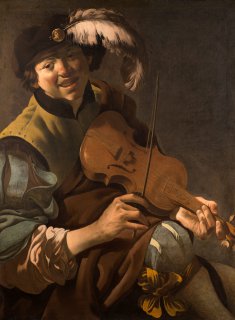
Hendrick ter Brugghen
A Boy Violinist
(1588–1629)
Dutch 1626 Oil on canvas 41 ¾ x 31 ¼ inches Gift of Mr. and Mrs. Elton F. MacDonald 1960.7
A Jolly Fellow
Full of youth and energy, Hendrick ter Brugghen’s painting captures a slice of Dutch life that, nearly 400 years later, still looks fresh. Look closer and discover details both in the painting and around it. By the end, you might even be tapping your foot!
A Day in the Life
Tools and Techniques
Behind the Scenes
Looking Good
Thanks to the generous efforts of two families in 2014, this painting received conservation treatment and hangs in a period reproduction frame of Tuscan origin. Consequently, one of The Dayton Art Institute’s finest masterpieces appears in the best possible light. Tap below to learn more about both the conservation and the frame.
Conservation
Problems: The painting had a layer of dust trapped in its exterior varnish, which impacted the visual saturation of the colors resulting in a hazy appearance over much of the picture plane. Closer examination revealed a misplaced shadow on the interior lower gum-line of the sitter’s mouth that was added much later than the artist’s original hand.
Solutions: The varnish and dust were removed, and the painting was cleaned and then re-varnished. Through diligent research and comparisons with other paintings by the artist created around the same time period in collections around the world, the mouth was reconstituted and more closely reflects the artist’s original intent.
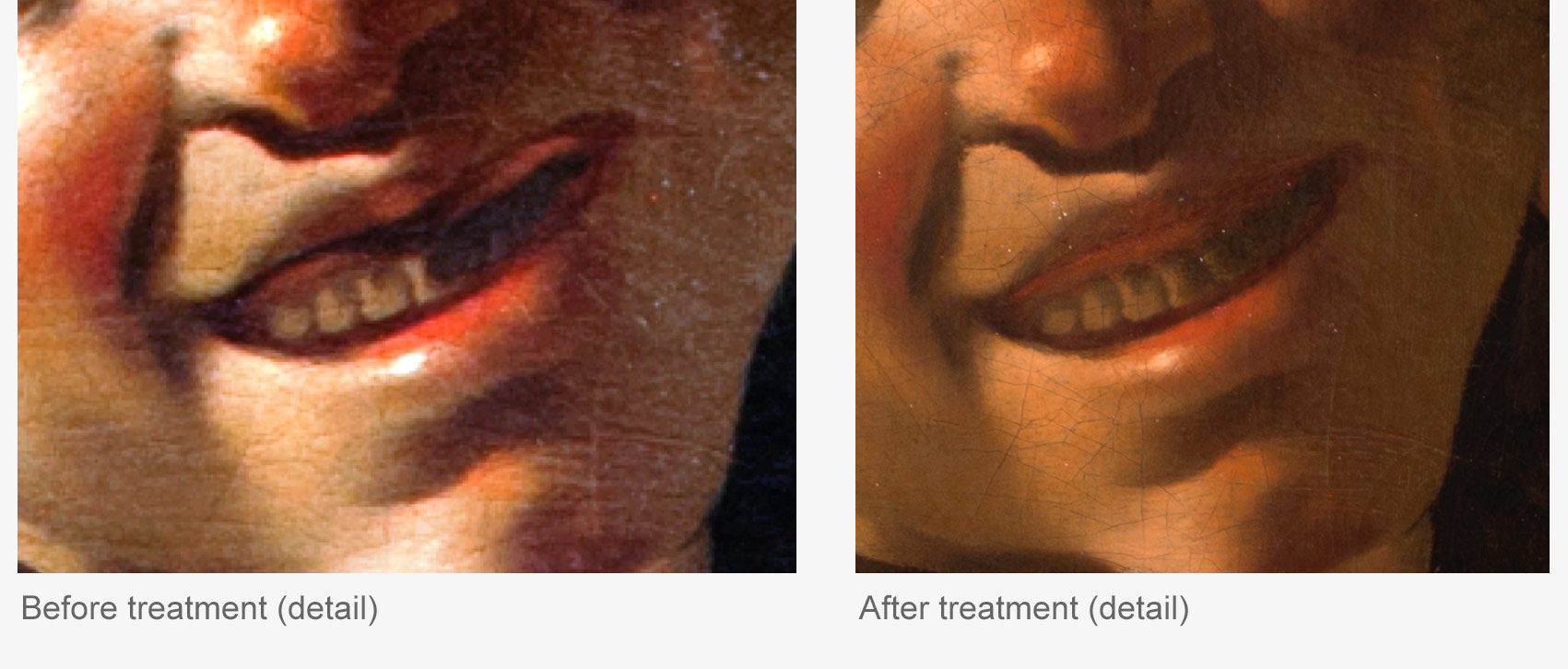
Funds for the conservation generously provided by the Shillito Family in memory of Chris Shillito. For more information on how you can help preserve and present your Dayton Art Institute collection, please contact the Development office at (937) 512-0139.
Frame
Problem: The former frame was a French Louis XIV-style frame of very poor quality, which did not complement the painting, the subject matter, or period of the painting.
Solution: A reproduction frame based on a very rare pattern found in a late 16th– / early 17th–century architectural cassetta-style frame of Tuscan origin. Cassetta means “little box,” and is a type of frame developed during the Early Renaissance period in Italy (1400–1479) that has the same inner and outer moldings around a flat central frieze. This particular frame is based on a style used during the artist’s lifetime and the muscular, yet elegant foliated strapwork cartouches (gold design in the corners and centers that resembles pierced straps) harmonize with the masculine subject dressed in 17th–century court garments. Similarly, the warmth of the walnut wood complements the umber tones in the painting that are found in the violin and in the cloak worn over the violinist’s shoulder, upon which his instrument rests.
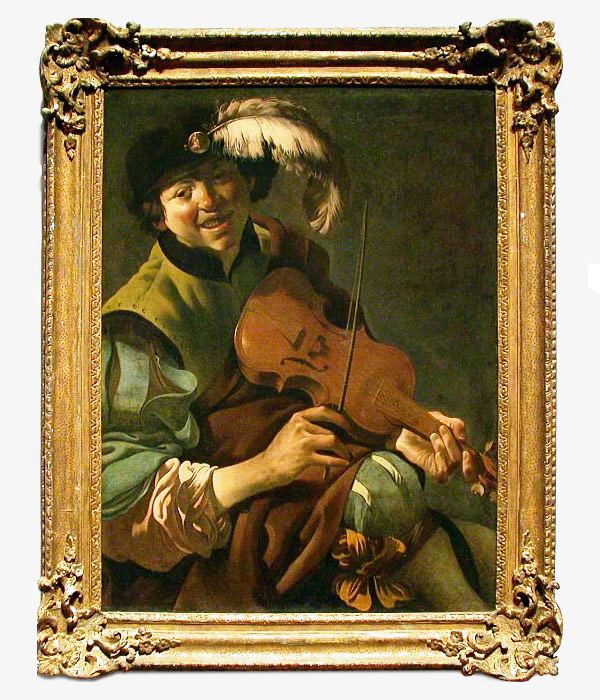
Former frame
Funds for the frame generously provided by the Sortman Conservation Fund in memory of Ronald Sortman. For more information on how you can help preserve and present your Dayton Art Institute collection, please contact the Development office at (937) 512-0139.
Look Closer
Just for Kids
Signs & Symbols
Dig Deeper
Documenting Daily Life
Is this a portrait of a famous musician? Not really. It is an example of a category of painting known as genre painting. Genre paintings depict the daily life and pastimes of the Dutch middle class, often entertaining and sometimes morally instructive. A subgroup of genre painting was portraits of musicians, a subject ter Brugghen excelled at as he painted musicians of both sexes, different ages, and playing various instruments, including the bag pipes, the flute, the lute, and the violin. While this boy may just look like a happy musician, there are details that ter Brugghen’s audience would have picked up on that add layers of meaning to the painting. What are some of these? Tap on the different points below to learn more.

Further reading: Leonard J. Slatkes and Wayne Frantis, The Paintings of Hendrick ter Brugghen, 1588–1629: Catalogue Raisonné (Amsterdam: John Benjamins Publishing Company, 2007), 49–59.
Arts Intersected
Fiddle Sticks!
This boy is playing a violin, holding it lower against the chest as was usual at this time. What kind of music is he playing? It does not seem that ter Brugghen was too concerned about the technical accuracy of the models playing instruments in his paintings, but look at the left hand. It is held in such a way that it would not shift much or use the “pinky” finger. This kind of position is more typical of fiddle playing and suggests he might be playing dance music. Also, the fingers that depress the strings “break” at the first joints, which is not a technique that would be used today; now, fingers would be rounded and the strings compressed with the tips. On the other hand, these unusual features could mean the model knew nothing about music and simply held the violin in a merry pose.
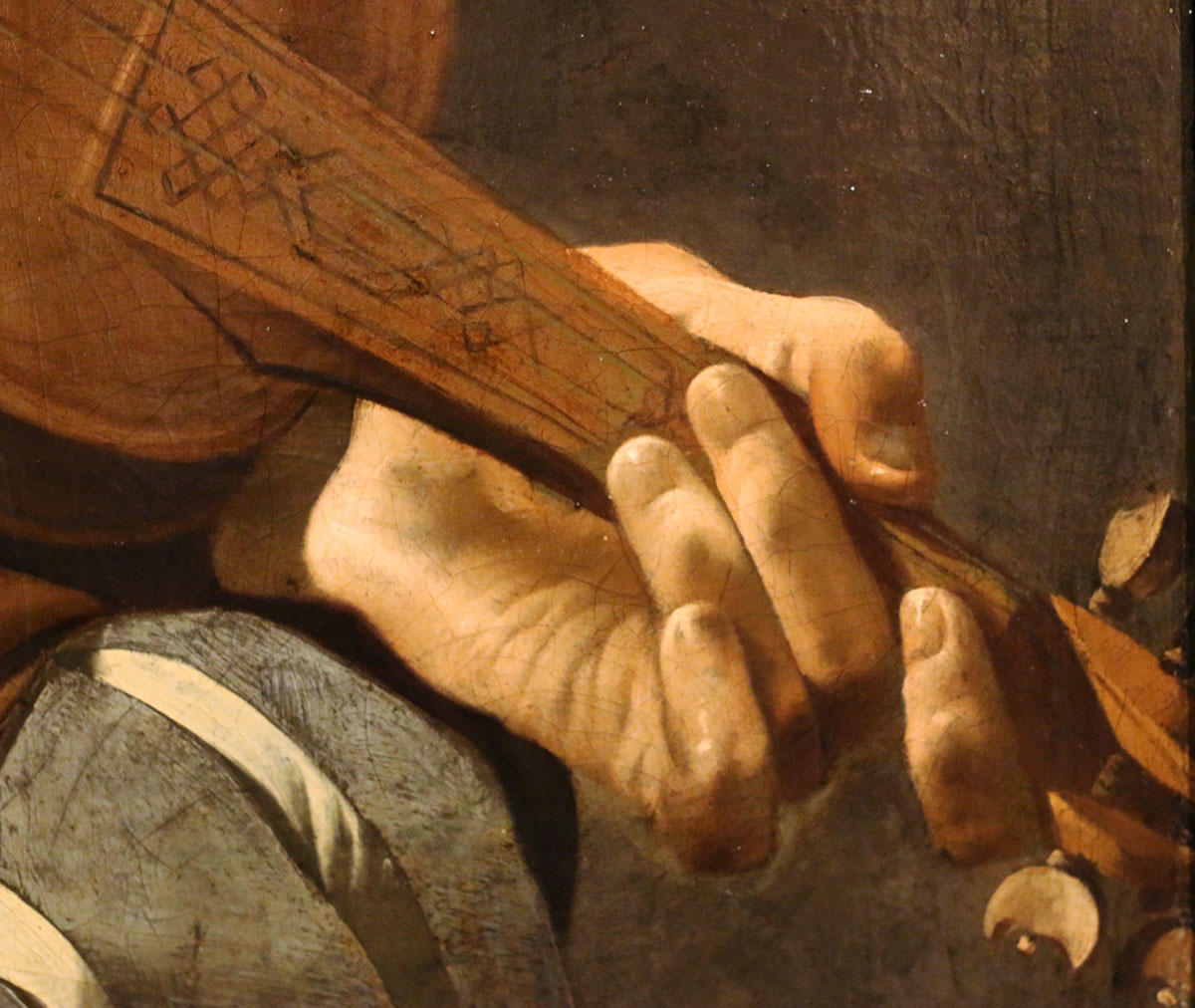
But if he was playing dance music, what might it sound like? Below you can listen to “The Parson’s Farwell,” a popular English country dance tune that appeared in the Netherlands in the influential collection of folk poems and melodies Nederlandtsche Gedenck-Clanck compiled by Adriaen Valerius (c. 1575–1625) and first published in 1626 (there it appears under the title “La Bourée”). It is performed by Dayton-based violinist Moira Levant.
Thank you to Moira Levant for her recording and to Margaret Erin of the Dayton-based Wind in the Woods Early Music Ensemble for musical information related to this painting.
The Sculpture Speaks
Did You Know?
Expert Opinion
Look Around
About the Artist
In the Shadow of Caravaggio
Based in the Dutch city of Utrecht, ter Brugghen was associated with a circle of painters who had studied in Rome and were influenced by the painter Caravaggio (1571–1610), including Gerrit von Honthorst (1592–1652) and Dirck van Baburen (c. 1594/1595–1624). Known today as the “Utrecht Caravaggisti,” they drew on Caravaggio’s use of contrasting light, models that convey an earthy realism, and a half-length format that brings the viewer closer to the subject in the painting. You can compare ter Brugghen with his fellow countryman Gerrit von Honthorst by looking at the nearby painting The Flea Hunt.
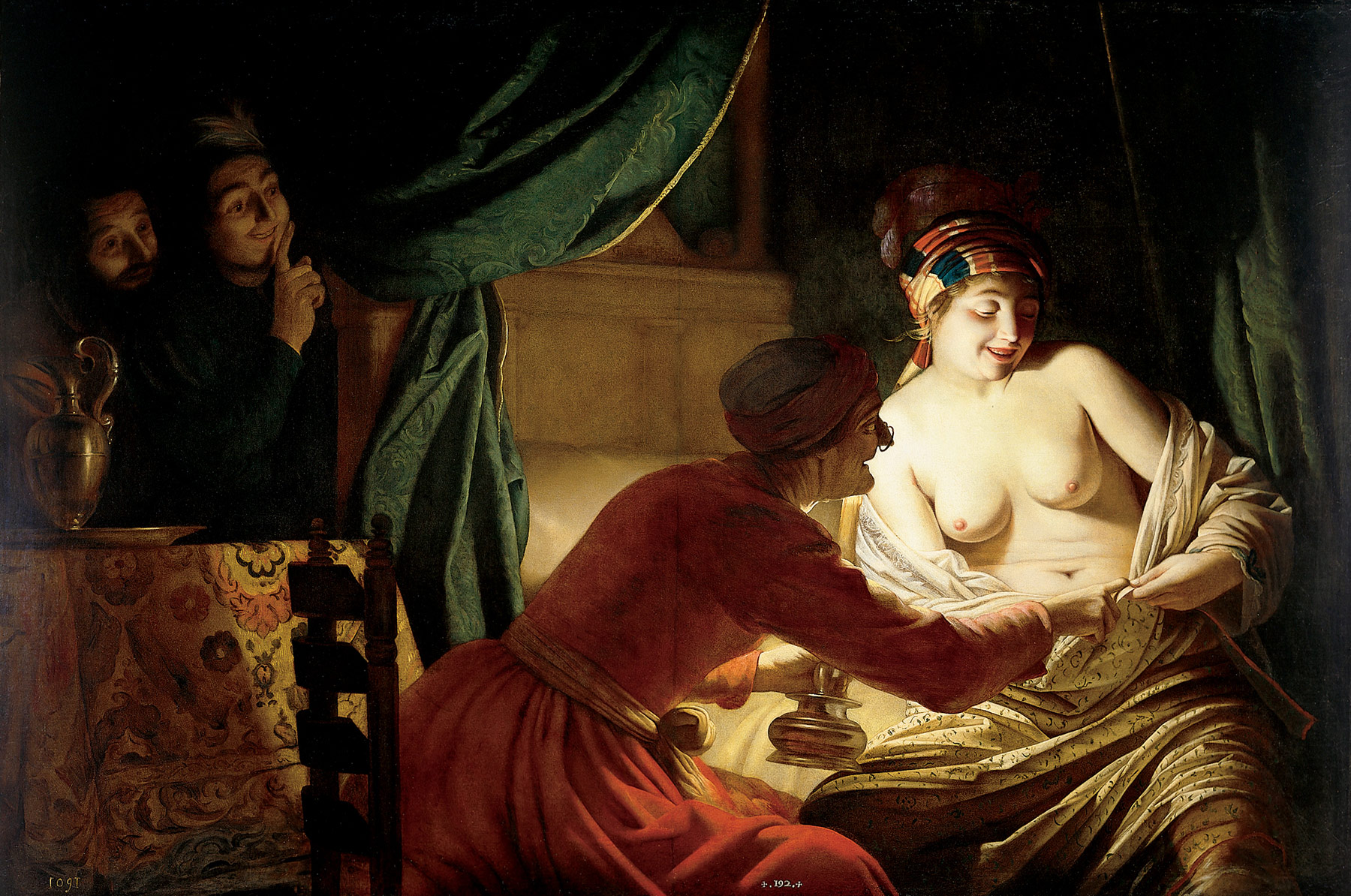
Gerrit van Honthorst (Dutch, 1590–1656), The Flea Hunt, 1628, oil on canvas, 52 ¼ x 78 ½ inches. Museum purchase with funds provided in part by the Associate Board’s 1980 Art Ball, 1980.2.
Talk Back
In Style
The clothes and accessories in this painting suggest the boy is up to date on the trends of his time. If you were to make a painting of young person today, what would she or he be wearing and doing?

